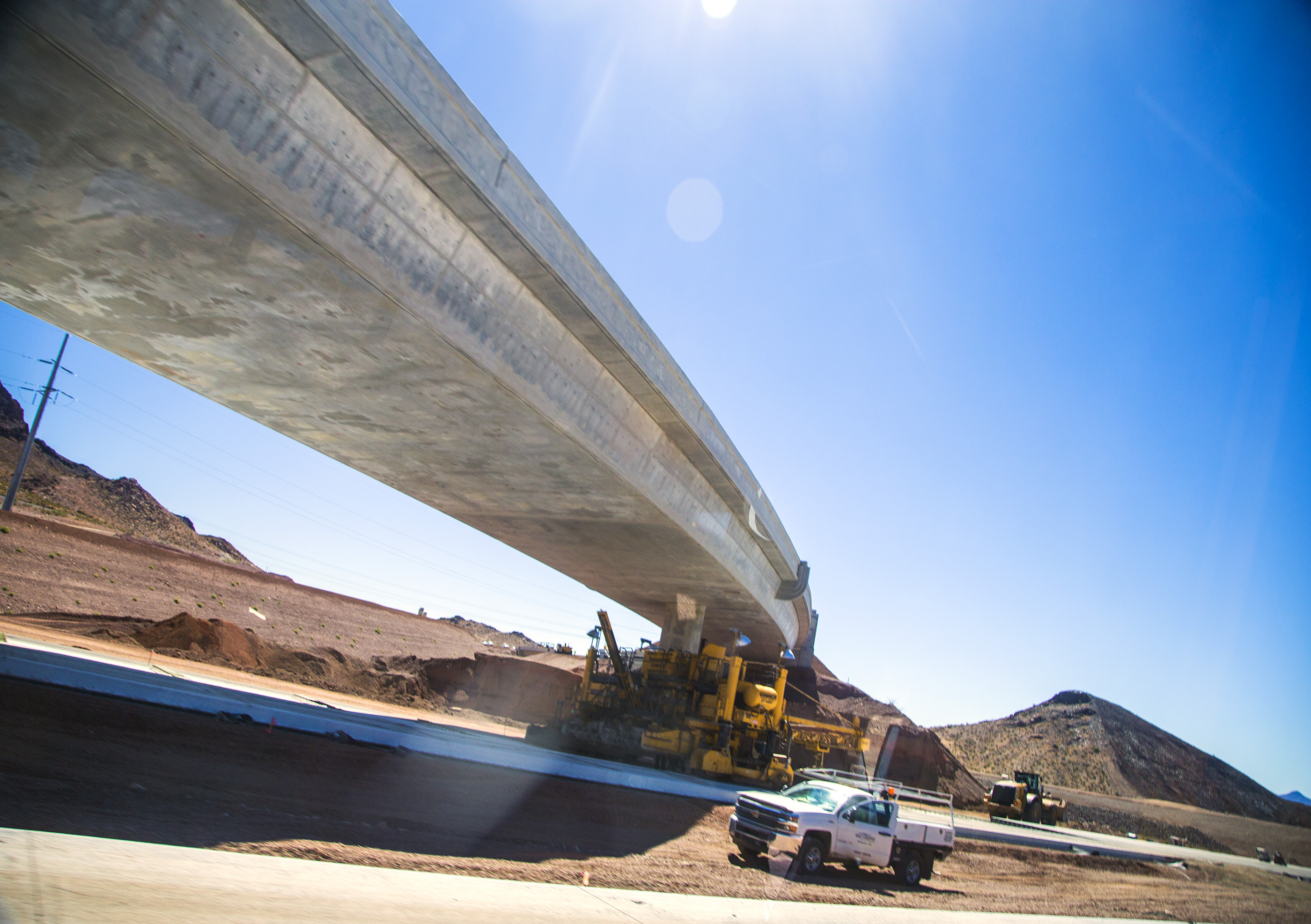‘Pipeline-to-nowhere’ project literally puts Boulder City at a crossroad

BOULDER CITY – Many residents of this bucolic town still scratch their heads about it.
Some see it as a scandal barely averted, one that would have changed Boulder City’s small-town feel forever. Others wonder if it went far enough for a community under pressure to expand despite its cherished slow-growth ordinance.
I call it the pipeline-to-nowhere, but that’s not an entirely accurate description. The water line project was headed somewhere in anticipation.
The 16-inch line stretches west along US 93 from the edge of developed Boulder City toward Railroad Pass, then cuts south along US 95 down into Eldorado Valley and the new I-11 Interchange. There it stops.
Although the new line is buried, bright yellow fire hydrants mark its path. The image of hydrants popping up across the desert seems absurd, but there it is.
By the time you reach the end of the line, you can barely see Boulder City proper. A vast swath of undeveloped desert fills the space in between, but you’re still standing on city-owned land.
Bringing a new water line that far into an empty area would normally signal impending commercial development, but that’s not how the project was sold to Boulder City residents. Officially, the water line was promoted as a necessary expense to support the needs of the impressive Copper Mountain Solar 4 power plant in Eldorado Valley. Back in February, a news release by the city manager’s office enthused, “This project, when complete, will build a redundant waterline to the line that provides water to the solar fields. The water is used mostly for cooling towers and to create steam for power generation.”
Just to drive home the point of its importance, the missive added, “The existing line to Eldorado Valley requires regular maintenance due to high usage. Building the new line will provide redundancy.”
Not to be redundant, but you get the idea that this project was an essential addition to the solar facility.
That was in February, before Mayor Rod Woodbury lost to then-Councilman Kiernan McManus and James Howard Adams knocked off Councilwoman Peggy Leavitt in surprisingly heated campaigns that saw voters reject a big spending ballot question and respond to the challengers’ historic preservation and slow-growth messages. Overnight, the face of the city’s elected leadership underwent substantial change.
So, it seemed, did the priority of running the new water line all the way to the solar facility. The important redundancy issue, suddenly, wasn’t such a big issue, after all.
The city posted on its official website a time line to illustrate just how long the water hookup has been under consideration. That’s a lot of planning just to come up short.
Skeptics who wondered whether the city’s effort was more about bringing water to an important interchange than providing a backup for the energy field found their suspicions stoked. Even those who envisioned a bustling and much bigger Boulder City had to admit that it’s quite a coincidence the line now extends to what promises to be a very busy and quite lucrative I-11/US 95 interchange.
But it’s official. In a letter dated Sept. 5 from Copper Mountain Solar 4 vice president Akshaya Bhargava to the Boulder City’s contracts/real estate manager Brok Armantrout, the company acknowledged the change of course and the end of the project. “With the completion of this water line, both the City and CMS4 have fulfilled all of their respective obligations under the above referenced agreements. CMS4 acknowledges that any further costs associated with modifying or extending this water line for use by CMS4 are now the sole responsibility of CMS4.”
What was sold as a $2 million expense that was essential to the success of the solar project was no longer necessary. And it’s been reported in the hometown Boulder City Review that ending the arrangement will save the city a few million in construction costs.
Which leads those Boulder City skeptics to further suspect that may have been the plan from the start. Expansion in the city is reined in by a slow-growth ordinance put in place decades ago in an effort to preserve its character and avoid the breakneck development that was taking place in the rest of Southern Nevada.
Boulder City’s pipeline reminds me of another infrastructure project three decades ago that sent water and sewer lines out past the edge of the Las Vegas city lights to what then seemed like the middle of nowhere. It wasn’t. The real estate was slated for massive residential and commercial development with some city officials taking advantage of inside information.
But, to be clear, no one is suggesting either current or former Boulder City officials followed that ethically questionable course.
It still makes me wonder when that water line will be put to its intended use. Not to mention all those fire hydrants.
For now, it’s just a pipeline to nowhere and, come to think of it, a good place to walk your dog.
